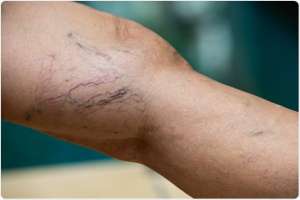Nobody likes getting those unsightly purplish blue colored veins pop out from under their skin. However, it is estimated that 20 percent of adults will at some point in their lives get varicose veins. Unfortunately, these veins may be a lot more than just an eyesore. Therefore, there are some important things that everyone should know about.
5 Things You Need to Know about Varicose Veins
1. What are Varicose Veins?
First, you need to know what exactly these veins are. Not to be confused with spider veins that are closer to the skin and much smaller, these veins are mostly found on the legs. They can be bluish, reddish, or even flesh-colored and tend to swell and bulge out from beneath your skin’s surface. These veins are the result of veins swelling overtime from blood backed up that pulls on your veins due to weak or damaged valves.
2. What Causes These Veins to Appear?
A number of things can cause these unsightly veins to protrude. Here are just some of the reasons why people have this problem:
- It’s genetic and passed down through family history. In fact, half of the people with these veins problems have other family members who share their burden.
- Women tend to get this problem more than men do, which may be due to hormonal changes.
- Age is a contributing factor to getting contracting this since the older you get, the more your valves will weaken and the better your chances are of getting them.
- Being overweight can strain your veins, causing these unsightly veins to appear.
-
These type of veins are superficial veins
One thing that’s important to note about this type of vein is that you don’t really need them, as these veins are, in fact, part of a superficial vein system and not the deep vein system that pumps blood to your heart. They are closer to the surface of your skin and not vital to your blood circulation, and therefore, won’t damage your heart’s blood flow.
4. How to Get Rid of These Veins?
Treatment involves making some lifestyle changes. Here are some ways to prevent complications, improve appearance, and relieve any symptoms associated with this problem.
- Don’t stand or sit too long
- Elevate your feet above your heart periodically
- Low-heeled shoes can tone your calf muscles
- Lose weight
- Wear compression stockings
- Exercise to improve muscle tone and blood circulation through your veins
-
Other Treatment Options?
If the lifestyle changes weren’t enough and you want to seek varicose vein treatment, there are some other options to look into. Some procedures can help reduce these veins.
Vascular and Endovascular procedures include:
- Veinwave and Sclerotherapy: These procedures use chemical or heat irritation to close off the vein and it will eventually fade away.
- Radiofrequency ablation (Venefit): A catheter applies radiofrequency energy to help shrink and close these veins. Most patients can go back to normal activity the following day.
- Ambulatory phlebectomy: Small cuts are made in the skin to remove the veins closest to the skin’s surface.
- Vein ligation and stripping: This procedure is similar to phlebectomy only after removing the veins the doctor also ties others closed. This is only done in severe cases.
The problem with these types of veins is that some patients develop complications that can include fluid buildup (edema), sores, ulcers, blood clots (a severe form of venous insufficiency), painful clots (phlebitis), and more. Therefore, seek varicose vein treatment by talking to your physician, if you have problems.












